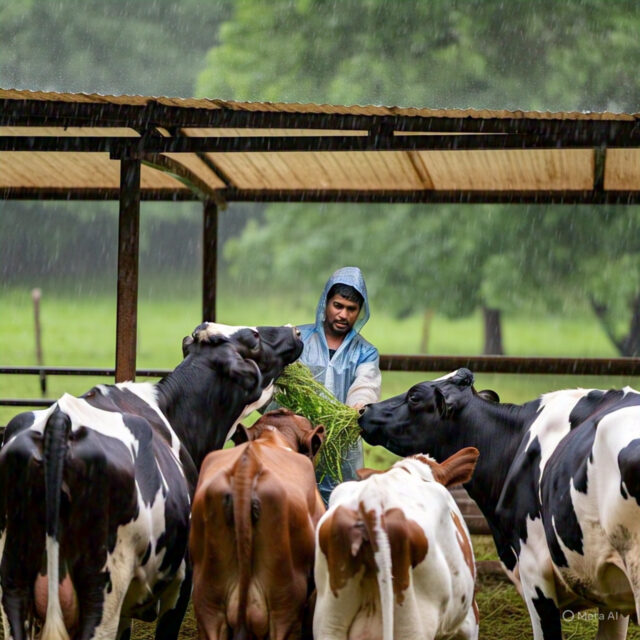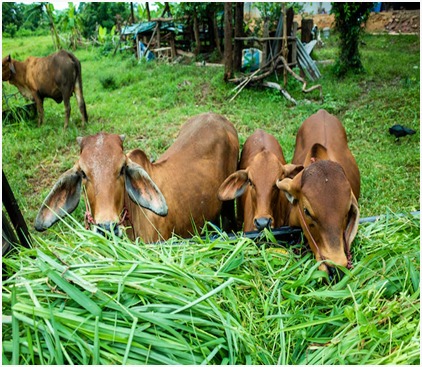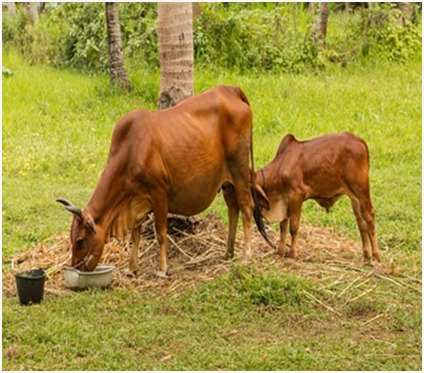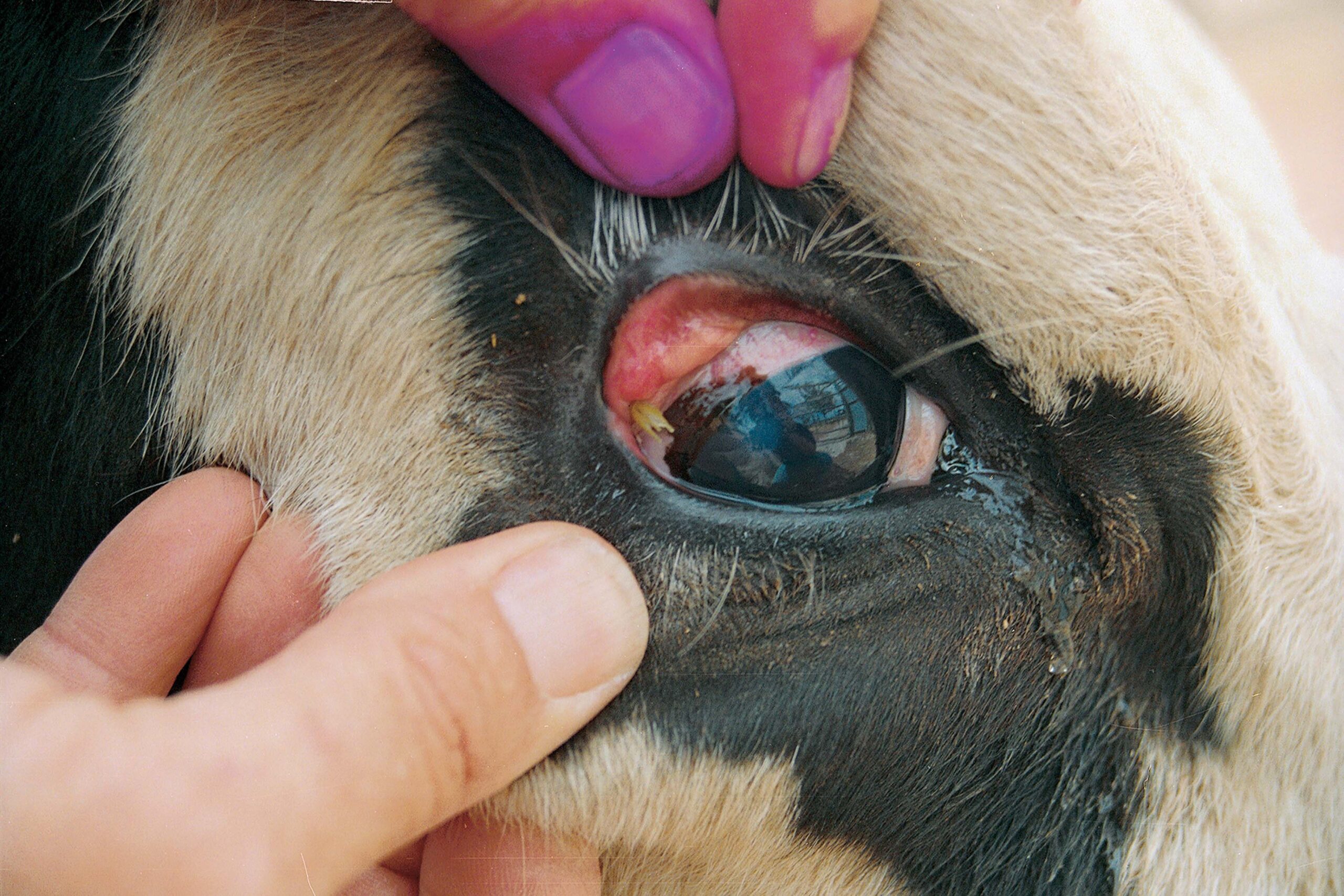
FEEDING MANGEMENT OF DAIRY ANIMALS DURING MONSOON SEASON
Introduction
In India, the monsoon or rainy season start from June to September and by the first week of July the entire country experiences monsoon rain, on average south India receives more rainfall than north India along with most precipitation in northeast India.However, this period also brings with it a number of difficulties for dairy production, such as problems with water, bacterial and viral infections, and general management concerns.
Dairy animals, just like humans need extra attention during the monsoon season to stay healthy and productive. During this season, the health and productivity of dairy animals may be negatively impacted by heavy rainfall, high humidity, and temperature fluctuations. Effective feeding management during the monsoon is crucial to maintaining the well-being of the animals and ensuring consistent milk production.During the monsoon season, different challenges arise for dairy animal, rainwater can mix with mud and contaminants and cause gastrointestinal disease.Ticks and flies increase in humid conditions, causing anaemia.Worm infestations, such as liver fluke and roundworms, are common during monsoon.
Feeding habbit during monsoon season
Farmers need to follow scientific feeding and management practices to maintain milk production. While giving green fodder in plenty during rainy season, in order to reduce the chances of diarrhoea, it can be mixed with straw or can be allowed to dry in sunlight for 2-3 hours. Chances of aflatoxicosis can be reduced by avoiding moist feeds or oil cakes, which are the potential sources of fungal toxins. Avoid letting animals graze on rain-soaked pastures as the grass may have high moisture and fibre content, leading to digestive issues and nutrient deficiencies. Add mineral mixtures to the feed to maintain nutrient balance.Store feed in dry, hygienic places to prevent mould formation and mouldy feed can be harmful if consumed by dairy animals.To prevent the scarcity of fodder, farmers can prepare unconventional feed like hay and silage. Along with these they can also use mineral blocks like urea molasses mineral blocks (UMMB) to fulfil the mineral requirement of animals.
Livestock may refuse to consume forages in areas that have been contaminated by rainy water because of palatability problem. The animals should also be frequently observed for signs of distress. Young, growing animals may be most susceptible to nutritional disturbances.Abruptly changing cattle diets can result in bloat or other nutritional disorders that threaten livestock health. Trees are often downed as a result of heavy rain. Sudden drop of the trees can damage the livestock directly or indirectly. Many trees like buckeye (horse chestnut), wild cherry (black cherry) and oak, can also cause potential livestock disorders if their leaves or nuts are consumed. So, animals should be prevented from consumption of such things.


(Source: www.google.com)
Conclusion
During the monsoon season, dairy cattle face significant health challenges due to increased humidity and fluctuating temperatures.High moisture content contaminates water, which increases the proliferation of pathogenic microbes and causes gastrointestinal disorder. Ectoparasites and endoparasites thrive in these conditions, therefor regular deworming is necessary and the use of ectoparasiticides to prevent anaemia.Proper housing management is essential. Excessive moisture can cause feed quality to decline, therefore it’s critical to store feed correctly and keep it dry. Maintaining cow productivity during the monsoon season and preventing infectious illnesses need timely vaccines and routine health monitoring.

Dr. Pobal Saikia1, Dr. Deepandita Barman2 and Dr. Arunoday Das3
M.V.Sc., LPM Scholar, College of Veterinary Science, Assam Agricultural University, Khanapara-22, Guwahati
Assistant Professor, Department of LPM, Lakhimpur College of Veterinary Science, Joyhing, AAU, NL, Assam
Assistant Professor, Department of ARGO, Lakhimpur College of Veterinary Science, Joyhing, AAU, NL, Assam

















